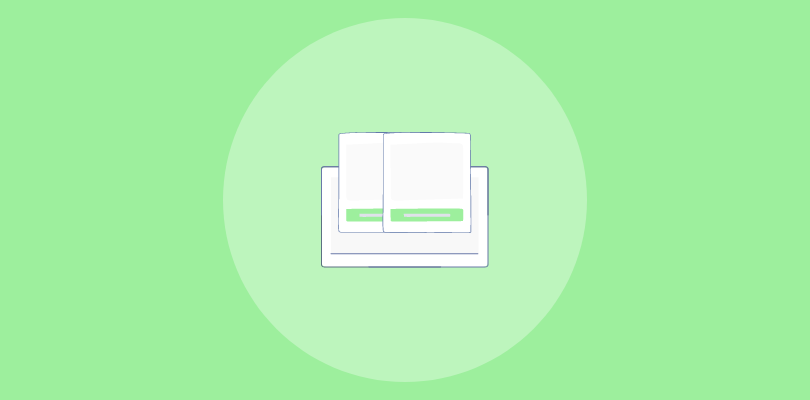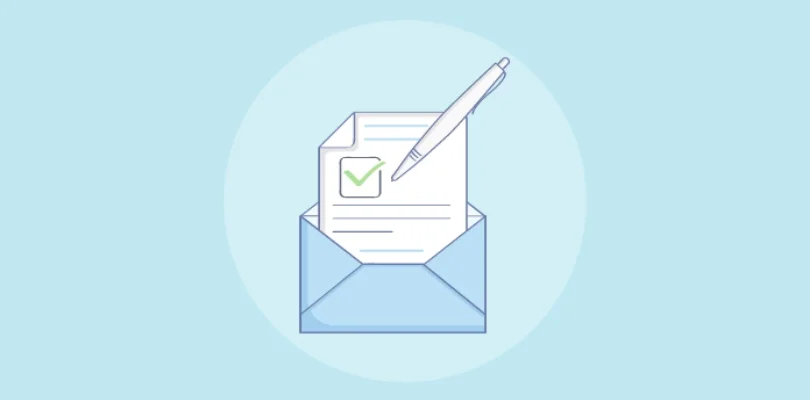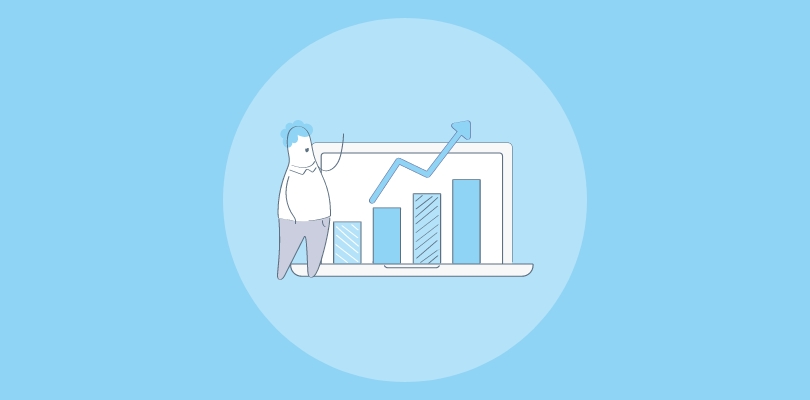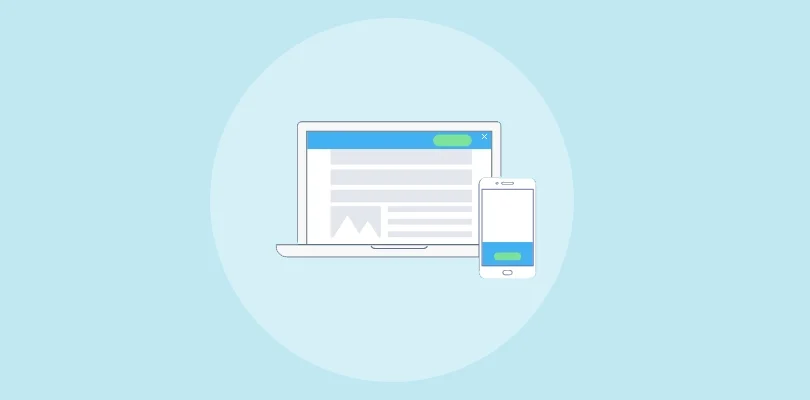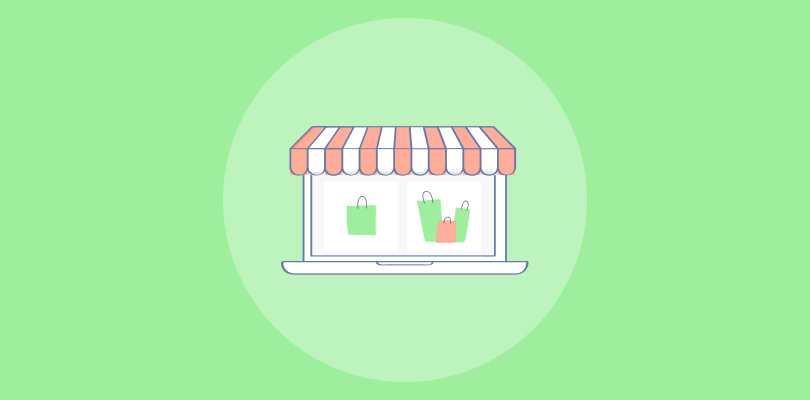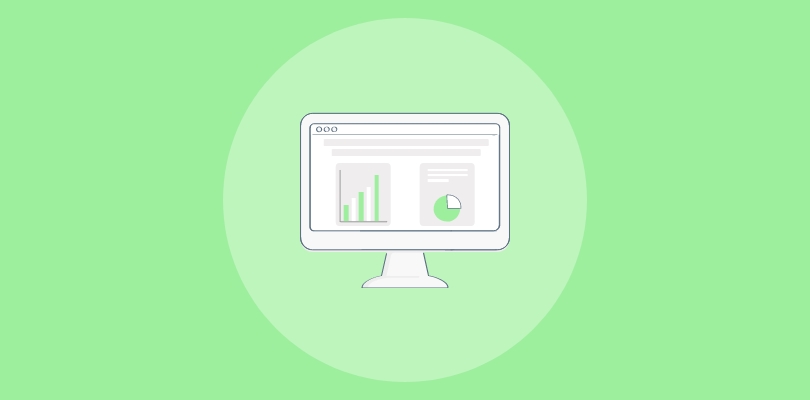
How to reduce the bounce rate on Shopify is a common question among most online store owners.
But why is it so?
So let’s consider you have a great product, but somehow, your visitors are not sticking around to see more of it.
Why is that? What are you doing wrong? And more importantly, what can you do to fix it?
The bounce rate is not just a number. It’s a reflection of how well your Shopify store matches the expectations and needs of your visitors.
If your Shopify store runs slow, confusing, irrelevant, or buggy, your visitors will bounce.
And that means you will lose sales, revenue, and reputation.
But don’t worry, there is hope. In this article, we will show you some proven strategies to show how to improve Shopify’s bounce rate.
Let’s get started!
What Are the Best Strategies to Reduce Bounce Rate on Shopify?
Bounce rates can be a bit of a puzzle, but fear not—we’ve got the strategies to help you crack it.
Let’s dive into some tried-and-true methods that will not only keep your bounce rate in check but also have your Shopify store visitors sticking around like they’ve found the ultimate online hotspot.
Here are some of the bounce rate reduction strategies for Shopify:
1. Improve Website Speed
In today’s fast-paced world, patience is a virtue that many internet users lack.
If your Shopify store takes too long to load, visitors are likely to bounce back to the search results or abandon their shopping carts altogether.
To combat this, optimize your website’s speed by:
- Compressing images: Large images can significantly slow down page load times. Use image optimization tools to reduce file sizes without compromising quality.
- Leveraging a content delivery network (CDN): A CDN distributes your website’s content across multiple servers worldwide, ensuring that visitors are served content from the server closest to them, minimizing load times.
- Minifying code: Minification removes unnecessary whitespace, comments, and code from your website’s HTML, CSS, and JavaScript files, making them smaller and loading faster.
- Choosing a reliable hosting provider: Your hosting provider plays a crucial role in website speed. Opt for a reputable hosting company that offers adequate bandwidth and resources to handle your store’s traffic.
2. Enhance User Experience
A user-friendly website is essential for keeping visitors engaged and reducing bounce rates.
So, how can you enhance user experience?
One of the best ways is to use popup forms. They are a game-changer for user experience on your Shopify site.
Imagine you’re greeted with a friendly form asking for your name or email when you visit a website.
Quick, easy, and non-intrusive, right?
That’s the magic of popup forms! They capture info, offer discounts, and conduct surveys without making users jump through hoops.
Apart from popup forms, there are other ways to enhance the user experience of your store. This includes:
- Simplifying navigation: Ensure that your website’s navigation is clear, intuitive, and easy to use. Visitors should be able to find the products or information they are looking for effortlessly.
- Using a mobile-responsive design: With a significant portion of web traffic coming from mobile devices, it is crucial to have a mobile-responsive website that adapts seamlessly to different screen sizes.
- Providing high-quality product images and descriptions: Use high-resolution product images and detailed descriptions to give visitors a clear understanding of your products.
- Incorporating social proof: Display reviews, testimonials, and customer ratings to build trust and credibility.
3. Add Clear Call to Action (CTA)
A clear and compelling call to action (CTA) is essential for guiding visitors and encouraging them to take the desired action, whether it’s making a purchase, subscribing to a newsletter, or signing up for an account.
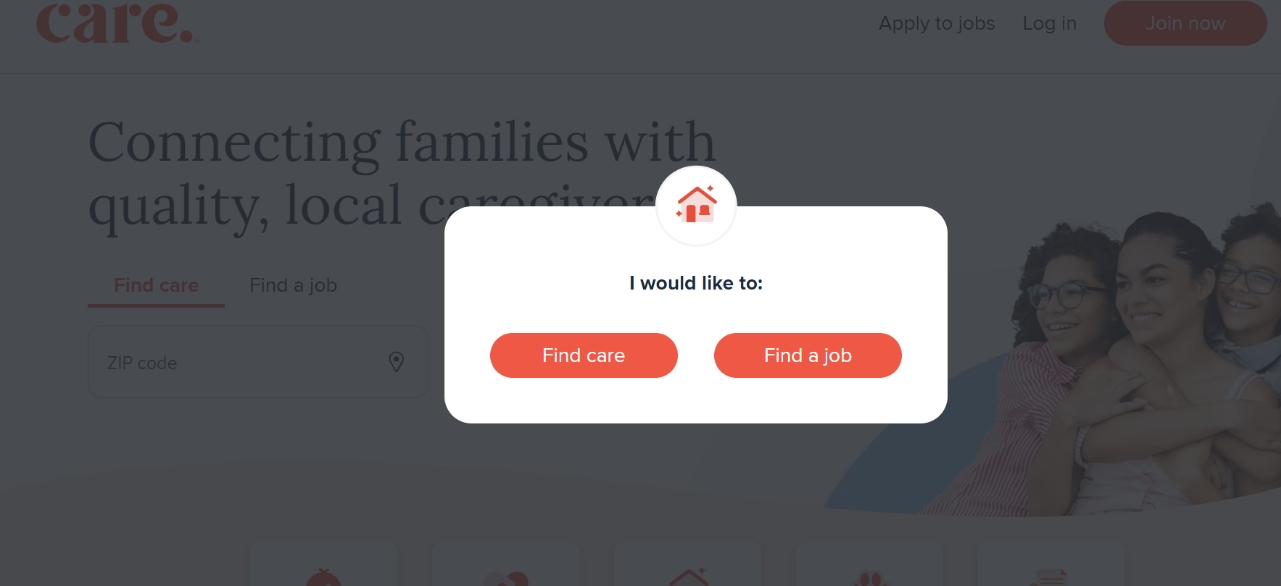
This is another strategy for improving your Shopify website bounce rate.
To create effective CTAs:
- Use strong and action-oriented verbs: Use verbs that clearly convey the desired action, such as “Shop Now,” “Sign Up,” or “Download.”
- Place CTAs prominently: Position CTAs in visible locations throughout your website, such as above the fold, at the end of product pages, and within blog posts.
- Design eye-catching CTA buttons: Use contrasting colors, attractive typography, and appropriate sizing to make CTAs stand out and grab attention.
4. Try A/B Testing
A/B testing is a valuable technique for determining which website elements resonate best with your audience and lead to improved conversions.
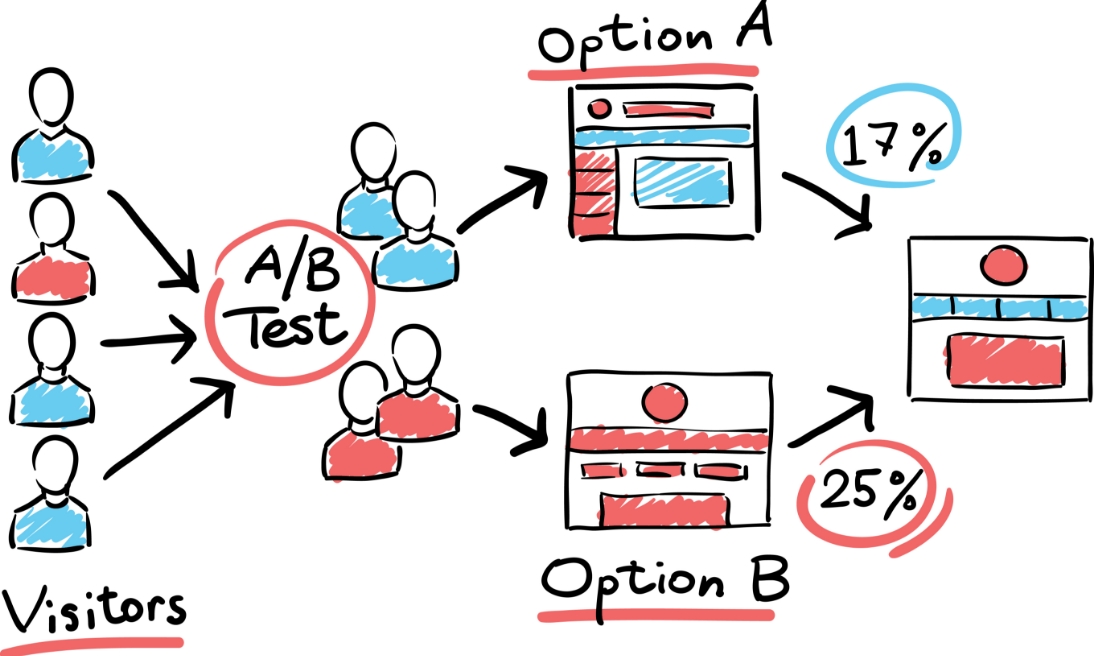
By testing different versions of headlines, CTAs, product images, layouts, and other elements, you can identify the most effective combinations for Shopify bounce rate optimization. This will lead to better engagement and reduced bounce rates.
- Simplify checkout process: A lengthy and complex checkout process can be a major source of frustration for online shoppers, often leading to cart abandonment.
- Minimize the number of steps: Keep the checkout process concise and straightforward, requiring only essential information.
- Offer multiple payment options: Provide a variety of payment options, such as credit cards, PayPal, and alternative payment methods, to cater to the preferences of different shoppers.
- Save shopper information: Allow shoppers to save their shipping and billing information for future purchases to expedite the checkout process.
- Display progress indicators: Clearly indicate the shopper’s progress throughout the checkout process to maintain transparency and reduce anxiety.
Also Read: 9 Simple A/B Tests You Should Perform for Higher Conversions
5. Use Exit-Intent Popups
Do you know that exit intent popups can help in improving your Shopify website bounce rate?
Exit-intent popups are a strategic way to capture the attention of visitors who are about to leave your website.
By offering a compelling incentive, such as a discount code or exclusive offer, you can encourage them to reconsider and engage further with your store.
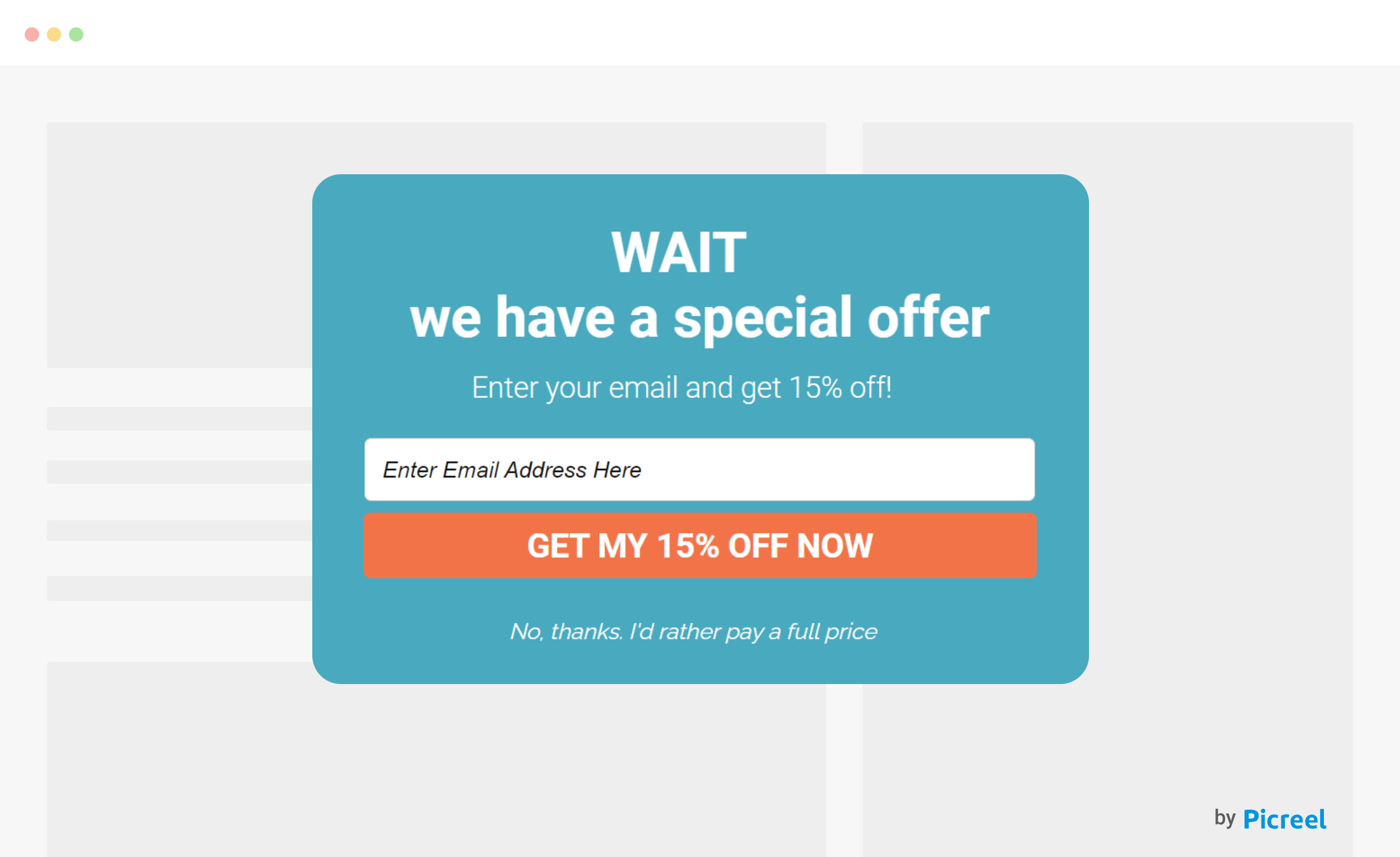
Foundr Magazine, a digital magazine for entrepreneurs, used Picreel to offer a free trial of their premium membership to visitors who were leaving their website. They created a popup that highlighted the benefits of joining the membership, such as access to exclusive content, courses, and community. They also added a countdown timer to create a sense of urgency. As a result, they managed to grow their email list to 250,000 subscribers in 2 years. Click here to read the full story.
Check out some exit intent examples that’ll fulfill your conversion-boosting goals.
To implement effective exit-intent popups:
- Timing is crucial: Trigger the popup as the visitor’s cursor moves towards the browser’s top bar, indicating their intention to exit.
- Personalize the message: Use targeted messaging based on the visitor’s browsing behavior or product interests.
- Design a visually appealing popup: Use eye-catching colors, clear fonts, and concise messaging to make the popup stand out without being overwhelming.
- Offer a valuable incentive: Provide an enticing offer that is relevant to the visitor’s interests.
6. Gamify Your Promotions
Another bounce rate reduction strategy for your Shopify website is gamification.
Gamification involves incorporating game-like elements, such as points, badges, popups, and leaderboards, to make your promotions more engaging and encourage participation.
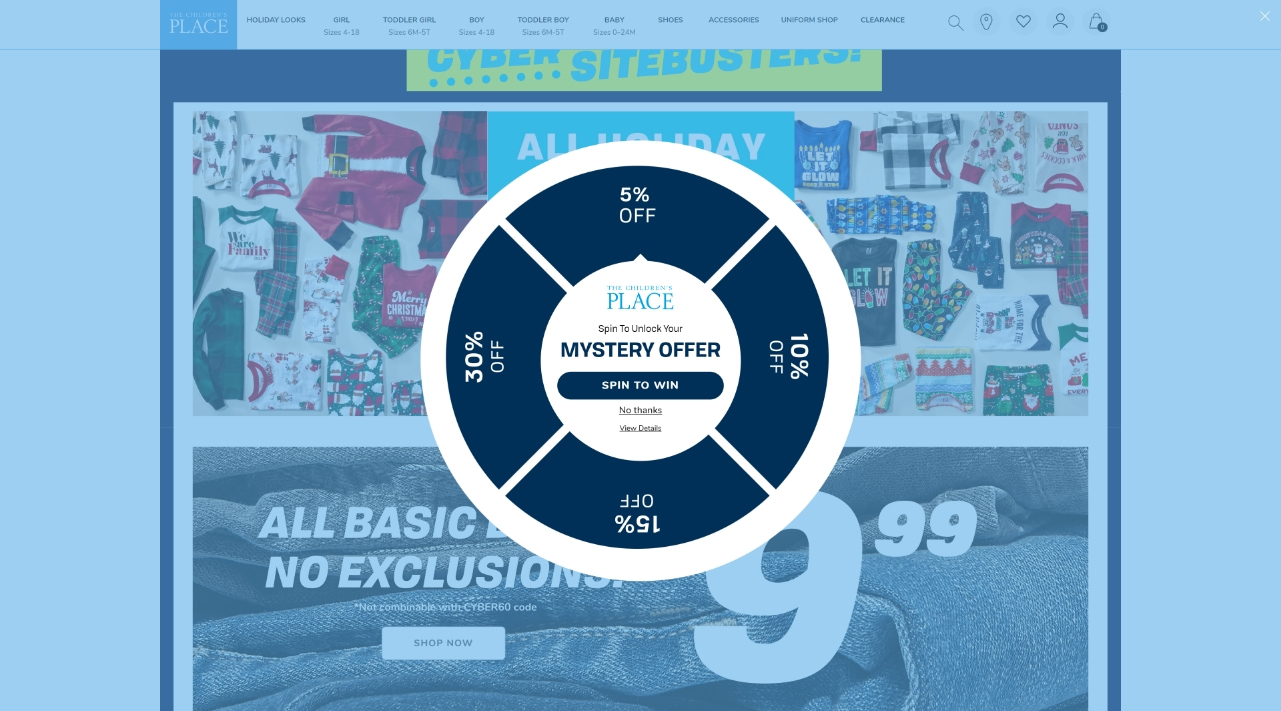
So, gamifying your promotions could be an effective strategy for reducing bounce rates and increasing conversions.
- Create a loyalty program: Reward customers for their loyalty with points that can be redeemed for discounts or exclusive offers.
- Incorporate interactive elements: Use interactive elements, such as scratch-off cards, spinning wheels, or prize draws, to create excitement and anticipation around your promotions.
- Leverage social media integration: Allow customers to share their progress and achievements on social media to generate buzz and attract new users.
- Personalize gamified experiences: Tailor gamification elements to individual customer preferences and behaviors to enhance engagement and relevance.
Pro tip: Use Picreel as the ultimate gamified poup tool. With its range of features and loads of customizable popup templates, it takes the top spot.
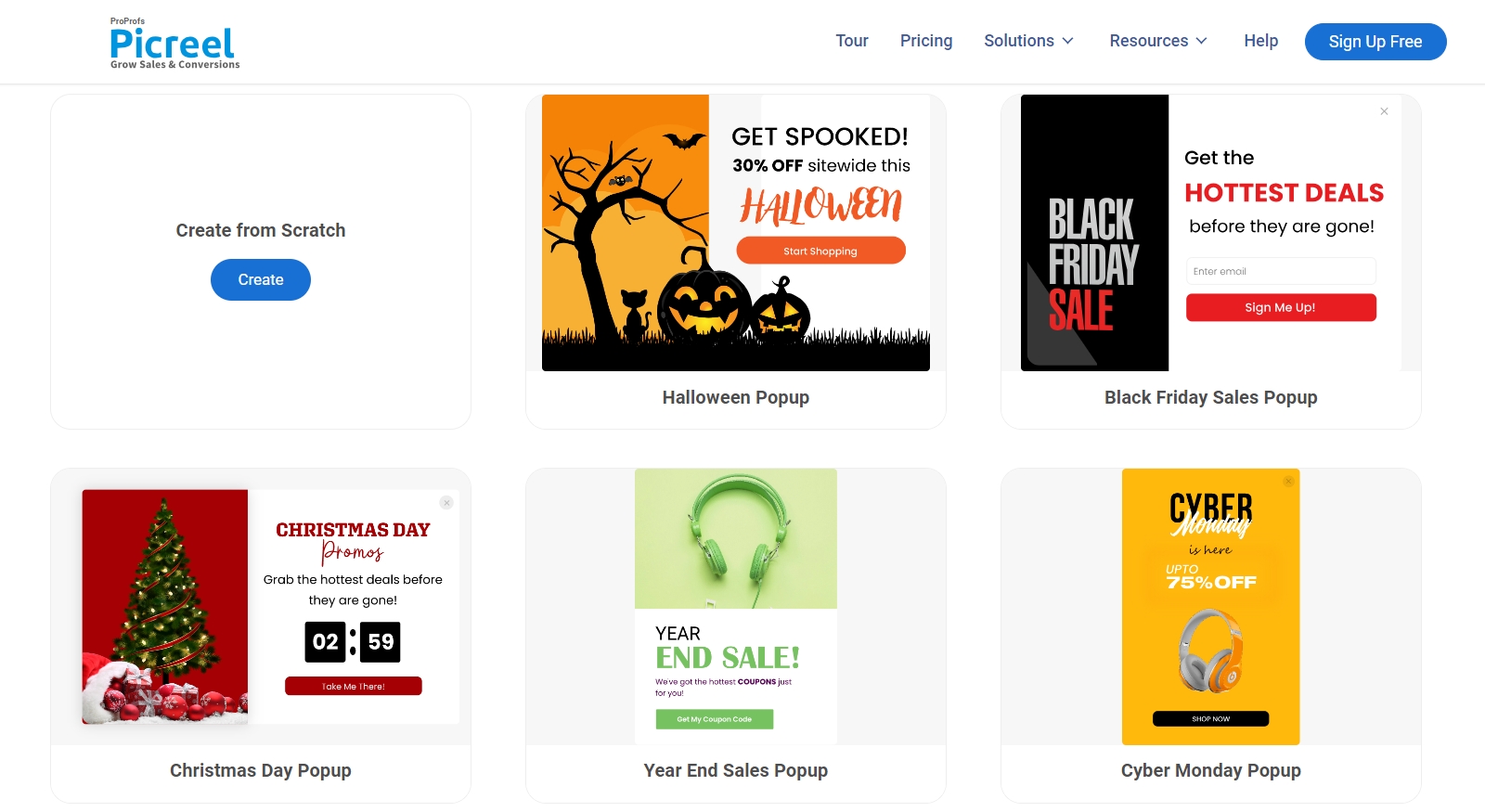
7. Establish Trust with Customers
Trust is everything.
“Trust signals that show your store is legitimate, reliable, and safe will reduce the fear and hesitation of your visitors and increase their confidence in buying from you.”
Building trust with your customers is essential for retaining them and reducing bounce rates. Here are some ways to establish trust:
- Display clear contact information: Provide easily accessible contact information, including your email address, phone number, and physical address (if applicable), to demonstrate transparency and accessibility.
- Implement SSL security: Secure Sockets Layer (SSL) encryption protects customer information and instills confidence in your website’s security.
- Display customer reviews and testimonials: Showcase positive reviews and testimonials from satisfied customers to build trust and credibility.
- Highlight certifications and awards: Display any relevant certifications or awards your company has received to demonstrate expertise and recognition.
- Practice ethical business practices: Adhere to ethical business practices, such as clear pricing, honest product descriptions, and prompt customer service, to foster a positive reputation.
Also Read : How to Reduce Bounce Rate in E-Commerce Effectively
8. Social Proof Across Your Site
When people visit your website for the first time, they might feel unsure about buying from you. It’s like when you try a new restaurant – you’re not sure if the food will be good.
That’s where social proof apps come in.
They show your customers that others are buying from you, kind of like saying, “Hey, other people like it, so you might too!”
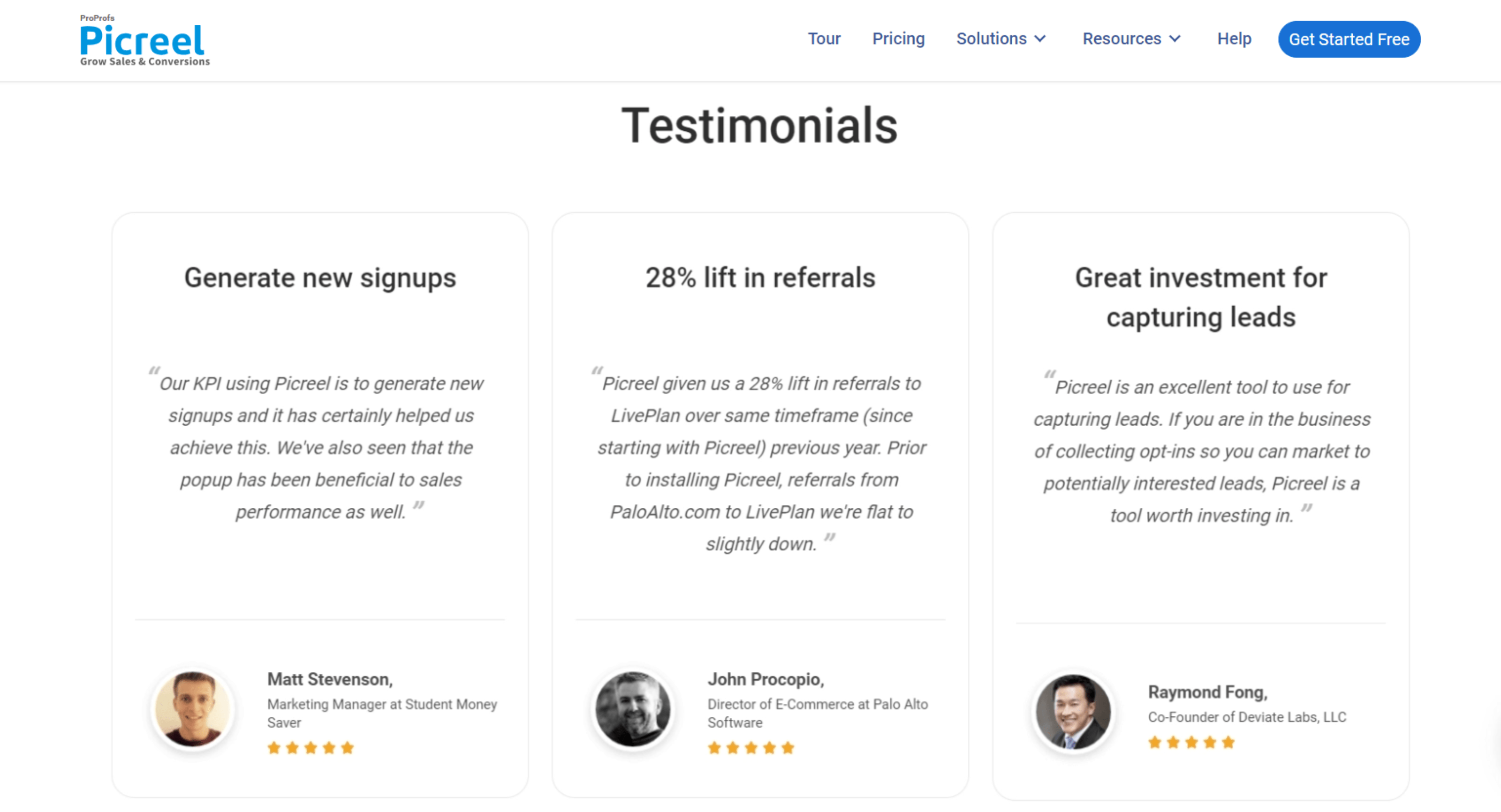
For marketers, the big goal is to make people trust your brand. Trust usually happens when customers see good reviews and interesting stories or know that a brand has a good reputation.
But when a brand is new, not many people have bought from it yet.
So, marketers use popups (those little messages that pop up on your screen) to encourage customers to take that first step and make a purchase. It’s like a friendly nudge to say, “Hey, give it a try – you won’t be the first!”
Incorporating social proof into your Shopify store through a well-designed Shopify newsletter popup can significantly reduce bounce rates and increase conversions.
Here are some ways to leverage social proof:
- Display customer reviews: Showcase customer reviews and testimonials prominently throughout your website, including product pages, the homepage, and the checkout process.
- Highlight social media mentions: Display social media mentions and positive feedback from customers to demonstrate your brand’s popularity and engagement.
- Feature influencer endorsements: Collaborate with relevant influencers in your niche to promote your products and generate positive buzz.
- Display customer engagement metrics: Show the number of followers, likes, shares, and other engagement metrics on your social media platforms.
Reduce Bounce Rate on Shopify With the Best Strategies
So by now, you’ve understood how to reduce the bounce rate on Shopify! You have learned some of the best strategies to reduce the bounce rate on Shopify and improve your conversions.
By following these tips, you can create a more engaging and user-friendly website that attracts and retains your visitors.
Whether you need to optimize your site speed, design, content, navigation or calls to action, you can find the right tools and resources on Shopify to help you achieve your goals.
Remember, reducing the bounce rate is not only good for your SEO but also for your customer satisfaction and loyalty.
Also, if you’re looking for a simple and effective way to reduce your Shopify bounce rate, Picreel is a great choice. It has a user-friendly interface that lets you create and test your popups with ease. Plus, Picreel comes with a forever-free plan that lets you create and deploy unlimited popups without paying anything upfront.
Also Read : 10 Effective Ways to Reduce Website Bounce Rate
Learn More About Bounce Rate on Shopify
What is the bounce rate on Shopify?
The bounce rate on Shopify is the percentage of visitors who land on your online store and leave without clicking on any other pages or products. It indicates how well your store engages and retains your potential customers.
A high bounce rate means that your store is not appealing or relevant to your visitors, while a low bounce rate means that your store is attractive and interesting to your visitors.
How to check the bounce rate on Shopify
To check the bounce rate on Shopify, log in to your Shopify admin dashboard and navigate to the “Analytics” section. Click on “Reports” and select “online store sessions by traffic type.” Look for the bounce rate metric, which indicates the percentage of visitors who leave your site after viewing only one page.
A lower bounce rate generally suggests better engagement. Analyze the data to identify potential issues or areas for improvement in your website’s design, content, or user experience.
Regularly monitor bounce rates to gauge the effectiveness of your strategies and make informed adjustments to optimize your Shopify store for higher customer retention and conversion rates.
Why is my Shopify store bounce rate so high?
A high bounce rate on your Shopify store may be due to slow loading times, unclear website navigation, irrelevant content, or a lack of mobile optimization. Visitors may leave if they can’t find what they need quickly or if the site doesn’t meet their expectations.
Ensure your site is user-friendly, loads smoothly, and provides relevant information to reduce bounce rates and improve overall customer experience.
FREE. All Features. FOREVER!
Try our Forever FREE account with all premium features!


